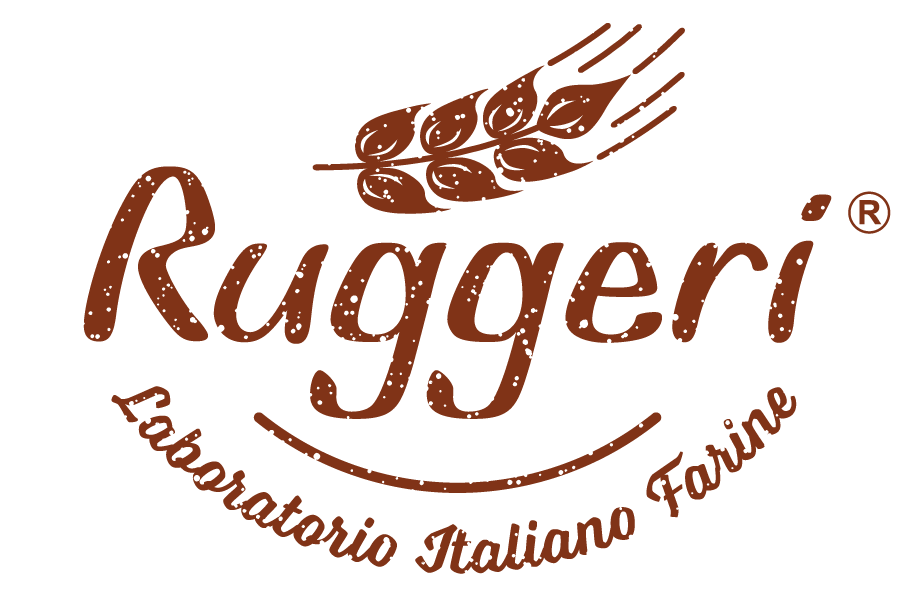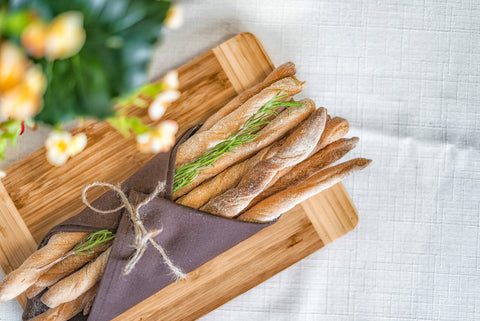Schiacciata all'uva is a traditional Tuscan recipe, prepared during the grape harvest period at the end of summer. It is a dough that is not particularly sweet , sweetened by the grapes that are added as a filling and as a decoration on the surface. A real delight, simple and genuine , that brings back memories of flavors from times gone by. Sonia from “L'Insolito BonBon” used our Spelt Flour , an aromatic and versatile flour to use in place of soft wheat flour. Here is her recipe!

Grape schiacciata: try this recipe with Ruggeri flours
Ingredients for the dough
- 200 g Ruggeri Spelt Flour
- 300 g Manitoba flour
- 100 g refreshed and doubled licoli
- 300 g of water + 50 g
- 40 g erythritol or coconut sugar
- 1 tablespoon of extra virgin olive oil
- 1 pinch of salt
- Coconut oil to taste for the pan and your fingers
- 150-200 g of white and black grapes
- Qb Rosemary sprigs
- 1 handful of walnuts
Procedure for grape schiacciata
It is recommended to start refreshing the yeast in the morning and wait for it to double; start preparing it in the mid-afternoon, and then put the dough in the fridge in the evening.
In the bowl of the stand mixer, weigh the licoli and pour in the sifted flours, also adding the 300 g of water. Mix roughly with a spoon, without leaving lumps of flour. Cover and autolyse for 1 hour at room temperature. After 1 hour, dissolve the erythritol in the remaining 50 g of water and add them to the bowl, turning on the stand mixer and adding them a spoonful at a time, so as to leave time to absorb the liquid. Run the stand mixer for about 5 minutes, then pause for 1 minute to avoid overheating the dough.
Add the pinch of salt and continue kneading at medium speed for 1 minute. Then slowly pour in the tablespoon of oil, leaving the mixer running for another 5 minutes or so. Pause for another 1 minute, then knead for a few more minutes at a higher speed. You should see the dough “cling” to the hook and the sides of the mixer becoming shinier.

Cover and let rest for 30 minutes, then proceed with a round of folds in the bowl, cover and wait another 30 minutes. Do another round of folds and cover. After another 30 minutes, the dough will be shinier and more full-bodied, but still very soft. Turn the dough out onto the work surface just oiled and do a final round of folds. At this point, put everything in a previously oiled bowl, with a square shape and high edges, marking the level. Put in the fridge overnight.
The next morning, take it out and let it acclimatize for about 2 hours. The dough should be half doubled: leaving it at room temperature will make it rise further. Grease the pan that will then go into the oven with coconut oil, turn the dough out and divide it in half, placing one half in a bowl.
With your fingers moistened with coconut oil, tap on the part of the dough remaining in the pan to distribute it evenly over the entire space. Sink the washed and halved grapes, previously removed from the seeds. Also distribute the chopped walnuts, sprinkle with a round of erythritol or your favorite sugar, then pour over the remaining pasta mixture and distribute it on the surface, gently tapping with your fingers. Then, distribute grapes to taste and sprigs of rosemary on the surface, always piercing with the fingertips dipped in coconut oil.
Cover the pan, place in a warm place for the second rising (about 1-2 hours). This step does not have a specific duration, it takes about 1 to 2 hours. By checking the dough and with experience you should be able to guess when it is time to put the pan in the oven: in general, when the dough is “crackling” and full of bubbles on the surface, it is the right time.
Cooking: turn on the oven in traditional mode, bake at 180° C for 30-35 minutes, checking that the surface does not become too dark. The bubbles on the surface will continue to grow during cooking. Remove from the oven, let cool, cut and enjoy!







